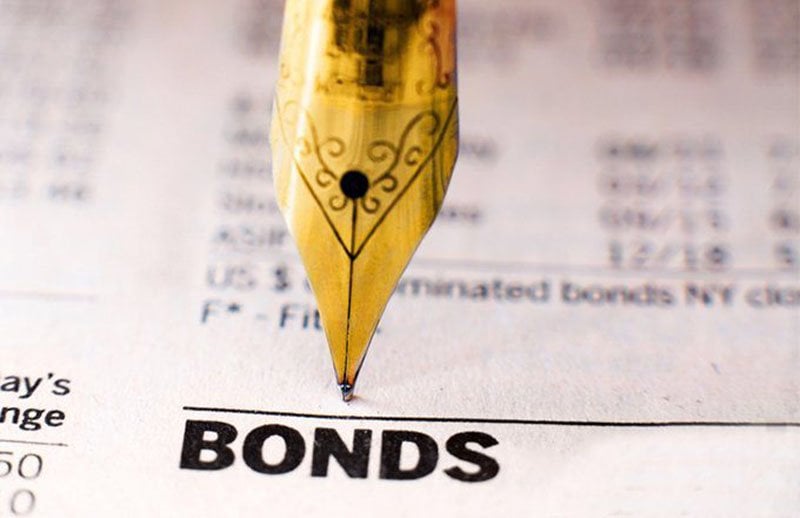8 Sectors That Benefit From Inflation (And 3 That Don’t)
When it comes to investing, it’s important to consider allocating money to industries that offer good protection from inflation. When the Consumer Price Index (CPI) remains stubbornly high, assets like fine wine can shield or potentially improve your returns.
In this article, we’ll cover 8 sectors that benefit from inflation and 3 sectors that have historically suffered. We’ll also show you how to cash in on an inflation-resistant investment through an investing platform like Vinovest.
Further reading
- Get all the insider tips on How to Sell Wine to maximize your profits.
- Thinking about investing in a wine estate instead? Here's a complete guide on How to Invest in a Vineyard.
Which Are The Sectors That Benefit From Inflation?
Although most equity sectors generally suffer during rising inflation, a few sectors have resisted or beaten rising inflation expectations. Here are some of them.
1. Wine

When inflation rises and purchasing power decreases, many investors turn to real assets for an inflation hedge. Of the many physical items available for investment, wine remains one of the best performers.
Fine wine has outperformed the Global Equity Index by 1.88% a year for the last fifteen years. Wine has also beaten stocks, precious metals, and art for over 100 years. The Liv-ex 1000, the broadest measure of the fine wine market, has successfully beaten inflation in G20 economies since the index’s formation in January 2004.
Wine has a minimal correlation of just 0.13 with equities and only about a third of the volatility most equity sectors face. Further, luxury good makers with pricing power, like wineries, are better positioned during inflationary periods as they can maintain their profit margin by charging higher prices as input costs rise.
Why should you invest in wine?
Scarcity: The world’s best investment wines are produced in minimal quantities, accounting for 0.1% of the world’s total wine production. So the demand for these bottles will always beat supply, and prices will continue to increase.
Brand equity: Bottles from many of the world’s best wineries can sell for huge amounts because they're in high demand by both investors and connoisseurs.
Improves with time: Where most real assets will degrade in quality and value with time, wine improves. The closer the wine is to its maturity, the greater its value.
What’s the best way of investing in wine?
Vinovest makes wine investing easier than ever. It’s a leading wine investment platform that offers the easiest way to source, manage, and grow a portfolio of investment-grade wines. The platform takes care of authenticating, insuring, storing, and selling your wines - all of which can be a hassle to do yourself.
The good news is that Vinovest allows you to sell your wine at any time. But bear in mind that fine wine usually peaks in value after 5-20 years.
Our advisors will maximize your returns and help you navigate any market condition. They’ll also guide you on the best liquidity options and the best time to sell.
How Vinovest works:
- Step 1: Start by signing up with the platform using your name, email address, and password.
- Step 2: Fill out a quick questionnaire. This helps Vinovest’s wine experts determine your preferred investment style.
- Step 3: Fund your account. You need a minimum of $1,000.
- Step 4: Customize your portfolio. Vinovest’s AI will recommend investments for you using your answers from the questionnaire.
- Step 5: Watch your portfolio grow.
Whiskey is also an inflation-resistant asset, should that be more to your taste.
2. Real estate

The real estate sector is popular among investors because it improves in value amid high inflation while delivering increased rental income.
However, real estate is vulnerable to rising interest rates, as the 2007-2008 financial crisis showed with the rising price of homes. It’s important to note that when inflation is too high, the Federal Reserve Bank will typically raise the interest rate to slow economic growth and curb inflation.
There are several ways to invest in real estate. You can buy property directly, which involves a much higher cost or invest in a real estate investment trust (REIT). REITs are companies that own and manage income-producing real estate. Publicly traded REITs are available on the stock market.
In particular, equity REITs have an excellent history of withstanding inflationary pressure. Equity REITs have outperformed inflation by 67% between 1973 and 2020 while delivering an average annual real return of 4.7%.
Since equity REITs own real estate assets, they’re a decent inflation hedge as they benefit from rent increases and property price increases.
REITs are attractive because, by law, they have to pay out at least 90% of their net earnings to shareholders and should undoubtedly be considered for a fixed income portfolio. But bear in mind that most REIT earnings are taxed as ordinary income up to the maximum rate of 37%.
3. Energy

The energy sector includes oil and gas exploration and production companies, fuel producers, and businesses that provide energy producers with equipment, materials, and services.
The energy sector has traditionally been a good bet during higher inflation primarily because demand for gas and electricity remains the same regardless of the price. As a result, between 1973 and 2021, the energy sector returned an annual average of 9%.
Energy stocks also tend to perform well during periods of rising interest rates.
Although it’s important to note that big oil companies have high operating leverage, which helps them deliver a high-profit margin.
Further, geopolitical and logistical tensions can affect the energy supply, driving up prices. This has contributed to the energy sector being one of the best performers during periods of higher inflation.
Some of the largest US energy stocks include ExxonMobil and Chevron.
4. Bonds

Investing in bonds during high inflationary periods sounds counterintuitive since inflation usually hits bonds the hardest. However, inflation-indexed bonds work differently. Treasury inflation protected securities are a popular option.
Treasury inflation protected securities (TIPS) are fixed income investments that rise in tandem with the Consumer Price Index. As inflation increases, so does the base value, and a higher base value results in a higher interest rate.
There are a couple of ways to buy inflation-indexed bonds. You can invest directly in TIPS through the US Treasury or a brokerage account. Some mutual funds and exchange-traded funds also hold TIPS.
There are junk bonds or high-yield debt for investors with a riskier appetite. Junk bonds tend to perform well when the inflation rate rises as demand increases for this riskier fixed-income investment.
5. Financial Companies

Financial companies include banks, insurance, and investment companies.
During the 2007-2008 financial crisis, the financial sector was one of the hardest hit, with massive companies like Lehman Brothers filing for bankruptcy. However, after an influx of new regulations and safeguards, the financial sector is considerably more robust today.
The largest US banks now hold 96% more capital relative to their risk-weighted assets than before the crisis and have implemented tighter underwriting standards.
Berkshire Hathaway is a financial stock worth considering.
6. Commodities

Investors tend to favor real assets during a high inflationary environment since these are likely to benefit from the rising price.
Gold has often been the first choice, but the precious metals asset class, in general, can benefit from an increased inflation rate.
You can invest indirectly in a mutual fund or ETF that holds gold. It’s also possible to invest in gold miners. You can also buy gold directly from a bullion or coin dealer at a higher cost.
Commodities also include agricultural products, oil and gas, copper, soybeans, etc.
Investing directly into producers' shares or trading commodity futures contracts are two promising avenues for accessing this investment. Alternatively, stock in companies like Exxon Mobil, Rio Tinto, and Vale SA can also serve you well when inflationary pressure picks up.
7. Healthcare

When there’s uncertainty in the market, the healthcare sector can provide inflation protection. For example, a Deloitte report found that the COVID-19 pandemic conditions coupled with advancements in science, technology, and analytics have been a catalyst for transformation in the industry.
The healthcare sector is also growing significantly faster than the overall global economy. However, the healthcare sector is broad and incorporates biotechnical companies, medical device companies, insurers, and healthcare providers, which could offer decent inflation protection.
8. Consumer staples

Consumer staples include food, personal hygiene products, household items, cosmetics, etc. These are the types of items you buy even if they’re charging higher prices.
Typically consumer staples companies don’t offer the best earnings growth as they’re often large, mature businesses. However, they provide limited price volatility, reliable dividends, and a good hedge in an inflationary environment.
Costco Wholesale and Procter & Gamble are two good companies to look at.
Although these sectors have historically performed well during rising inflation, keep a lookout for others. Traditionally, value stocks in general, perform better during high inflation. On the other hand, growth stocks tend to benefit from low inflation.
But which sectors are hit hardest by inflation?
Let’s find out.
3 Sectors To Avoid During Inflation
Not every equity sector performs equally well during inflationary periods. Here are 3 industries that have historically underperformed while inflation rises.
1. Consumer discretionary

This sector covers non-essential goods and services for which demand depends on consumer financial status. The sector includes companies selling high-priced vehicles and luxury goods.
A reduction in purchasing power diminishes nonessential consumer spending.
The sector is particularly susceptible to supply constraints, with the automobile industry being one of the hardest hit. Consumer discretionary companies also face fluctuating input costs, primarily from rising shipping costs, wholesale prices, and wages.
While the economy is performing well, these companies can offload these price increases to their customers. However, if the US Federal Reserve tightens monetary policy to curb inflation, this sector could take a hit, given its cyclical nature.
2. Industrials

Historically, the industrial sector has underperformed during high inflation. Industrial companies tend to face headwinds from rising input costs and diminishing demand. This is mainly because many industrial products, like construction equipment and industrial machinery, are cyclical.
Supply constraints, high labor costs, and rising fuel prices can further contribute to the sector’s underperformance, particularly for industries like airlines and transportation.
3. Materials

As global demand remains strong, the material sector can receive an initial boost during high inflationary periods. However, rising concerns about economic growth can weaken the materials sector. This is especially true for downturns in material-producing economies, such as China.
So, where do you start?
This could be the easiest way to start protecting your investments from inflation:
Fine Wine: A Traditionally Inflation-Resistant Sector

It’s essential to allocate a portion of your portfolio to sectors that are historically resistant to inflation. This way, when inflation inevitably rises, your cash flow should remain relatively stable.
Fine wine should be top of mind for investors preferring a tangible asset class when purchasing power suffers.
Vinovest makes purchasing this inflation-beating asset a breeze! Simply sign up today to get started.



